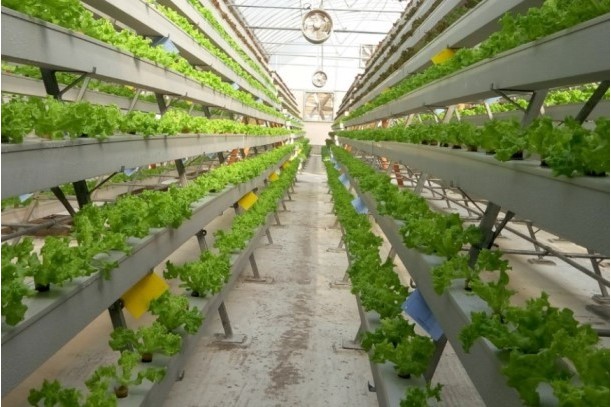Modern sustainable farming techniques

Summary
We must not forget that over 60 million African children under five years are not growing properly.
A recent report by the Food and Agriculture Organisation of the United Nations (FAO), in collaboration with the UN Economic Commission for Africa (ECA), emphasized that climate change remains a threat to food security and nutrition on the continent. According to the UN bodies, climate change is a major setback to achieving the second Sustainable Development Goal (SDG), which seeks to end hunger and make sure every person on the continent has access to sufficient and nutritious food by 2030.
The last four years (2015-2018) have been the warmest on record worldwide, according to World Meteorological Organisation (WMO). Every increase in average global temperature interferes with our ability to access fresh water for agriculture, eventually leading to food shortages. Forecasts from WMO suggest that 2019 would likely be warmer than 2018. Indeed, there have already been complaints in some parts of the continent about a rise in heatwaves since January of this year.
Unfortunately, Africa will bear the highest economic cost of climate change-induced heatwaves and other extreme weather conditions over the next twenty-to-thirty years, compared to other continents. The continent’s agriculture sector, which is mostly rain-fed, will suffer the most as a result of droughts and increased desertification.
Countries like Madagascar, Zimbabwe, Kenya, Ethiopia, Djibouti, Somalia, Uganda, Malawi and Lesotho experienced climate shocks in 2016 after enduring two-to-three years of drought. Worse still, extreme weather conditions – resulting in heavy rains and thunderstorms – were experienced in many parts of Western and Southern Africa, causing flooding and soil erosion, which damaged food crops. These climate shocks caused widespread food shortages, which affected millions of people in those countries.
Based on recent estimates by FAO, a staggering 257 million people on the continent are undernourished – compared to 241 million and 237 million undernourished people in 2016 and 2017, respectively. Addressing these growing hunger statistics in the face of climatic factors will certainly be more difficult but not impossible. What is required is for African countries to adopt innovative, efficient and sustainable methods of producing food to maximise limited resources like land and water, especially at a time when land degradation, desertification and water scarcity are on the increase.
Some examples of sustainable and innovative methods of food production are hydroponics and aquaponics. These are existing soil-less food production techniques that could significantly save Africa from the scourging effects of extreme weather conditions. When I visited The Future Farms in the United States a few years back, I saw firsthand how fish farming and vegetable production were efficiently combined to maximize water and land in a soil-less system.
Hydroponics is a method of growing plants without soil. In this case, the plants’ roots are in a water-based solution. The solution is usually nutrient-rich and there is provision for an inlet for oxygen. With these, the plants can grow without soil. In a hydroponic system, temperature, pH and other conditions are well monitored.
A more efficient use of the hydroponic system is in aquaponics. This is a technique for growing fish (and other aquatic lives such as crabs and prawns) and plants together in a controlled and re-circulating environment. It combines aquaculture (or aquafarming) with hydroponics. Like hydroponics, the method does not require soil and uses 70 percent less water than the traditional method of growing crops. Water is also efficiently recycled and made available for both fish and plants. Aquaponics is often done in a greenhouse, which protects the system from unfavourable weather conditions.
A farmer operating an aquaponic system creates a symbiotic condition whereby the plants utilise waste products from the aquatic animals as a source of nutrients. And in return, the plants purify the water, thereby keeping both the fish and plants alive, and they are a source of food for aquatic lives.
The system also allows the growth of the type of bacteria that convert the ammonia from fish waste to nitrate. Plants then absorb the nitrate in the water through their roots to make protein, which are very important for healthy growth in humans and other animals.
In essence, this technique grows substantially more food with less water, land and labour. Vegetables such as lettuce, kale, okra, spring onions, spinach, herbs and mint can be conveniently grown in an aquaponic system. Other crops such as tomato, cabbage, broccoli, cucumber, beans and cauliflower can also be grown in a more advanced aquaponic system.
Since vegetables are the major crops grown in an aquaponic farm, scaling up this system of farming in developing countries, especially in the African region, could help increase the production and consumption of vegetables. The increase in production of veggies will expand the sources of dietary fibre, vitamins and minerals.
Furthermore, fish production will become easier and less expensive. This means more fish would be produced, thereby translating to more sources of protein for everyone, especially children. We must not forget that over 60 million African children under five years are not growing properly. They are either too short for their age (a condition called stunting) or too thin for their height (also known as wasting). Potentially, the beneficial outcome of adopting hydroponic and aquaponic farming would be a reduction in the Prevalence of Undernourishment (POU) in Africa.
The use of controlled environments in farming – as enabled by these techniques – also protects crops and aquatic animals from pests and disease attacks or outbreaks. Unlike the conventional method of farming, hydroponics and aquaponics are not affected by soil degradation. They also mitigate the effects of climate change. The systems also eliminate the use of toxic pesticides, fertilizers and antibodies required by conventional, large-scale agriculture. In addition, they are eco-friendly and sustainable.
Another benefit of these techniques is the opportunity they provide for vertical farming. Vertical farming is a more sustainable method of farming whereby food can be produced on multiple surfaces or layers instead of using only one surface. Instead of having a single on-ground hydroponic or aquaponic system, vertical farms allow several layers of crops stacked vertically.
Vertical farming can make a huge difference in food production, especially in challenging environments like deserts, mountainside towns and cities where access to arable land is limited or unavailable. In places where there is scarcity of water, a vertical farming technique that could be adopted to make use of very little water and no soil is aeroponics. This technique was designed by the United States National Aeronautical and Space Administration (NASA) in the 1990s. The aeroponics system allows plants to grow in the air or in mist environments with very little water. It uses a dumbfounding 90 percent less amount of water than most hydroponic systems.
The beauty of vertical farms is that they can be effectively done indoors. The major challenge, however, is the initial cost of setting them up. However, once the initial start-up cost barrier is broken, the farms can generate returns on the investment to offset the initial cost. The system also produces more nutritious, protein-rich foods that are cultivated in a safe and environmentally-friendly manner.
These sustainable farming methods can potentially help to grow Africa’s economy, boost food security in the region and mitigate the impact of climate change on agriculture. For Africa to feed its fast-growing population, there must be a strong commitment to adopt modern farming innovations to maximise depleting resources.
Financial Nigeria Columnist, Mojisola Karigidi, is a Nigerian biochemist and the founder and product developer at Moepelorse Bio Resources. She is also a Global Innovation Through Science and Technology (GIST) awardee, and an Aspen New Voices fellow.
Related
-
Unleashing the potential of Africa’s cotton industry
Binding arrangements with the private sector present a number of benefits for cotton producers.
-
African Union's bold agenda for agriculture transformation
Renewed commitment to agriculture development is part of the AU's 2063 agenda, which aims to reverse decades of African ...
-
How to create wealth through agriculture in Africa
While both the employed and the unemployed across Africa have been encouraged to engage in agriculture, the focus has been ...









_-_300x350-202501141442143232.jpg)
